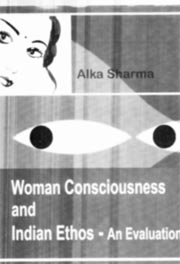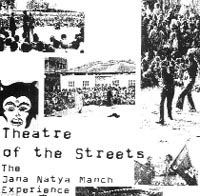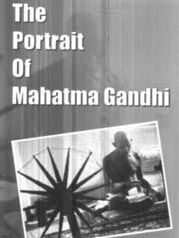|
SHORT TAKES
Voices from the stage
Randeep Wadehra
Woman consciousness and Indian
ethos
Ed Alka Sharma. Omega Publications,
New Delhi. Pages: xx+190. Rs 450.
 For
ages women in India
have been simultaneously deified, demonised and damned. She is either a
Devi, a she-devil (raakshasi) or a doormat but never human. But,
does this sum up her status in the Indian ethos? More important, what is
the level of her own awareness regarding the various challenges to her
very existence, and her potential to overcome these? These are some of
the issues addressed in this bilingual collection of essays. Kumud
Sharma avers that "women are rediscovering their individual and
collective resources rather than remain rooted in traditional social
systems" and "it is important to constantly interrogate
dominant narratives of women’s consciousness that shape the notion of
self". Aditya Angiras blames western materialism and loss of hoary
Hindu values for women’s present predicament. Ramakant Angiras
stresses the need for understanding feminine identity in today’s
context while Padmaja Amit examines women’s sensibility in Sanskrit
literature. Other writers tackle the issue of female status and
consciousness in scenarios ranging from domestic violence to the
corporate world. If only the Hindi contributions in this volume were
translated into English. For
ages women in India
have been simultaneously deified, demonised and damned. She is either a
Devi, a she-devil (raakshasi) or a doormat but never human. But,
does this sum up her status in the Indian ethos? More important, what is
the level of her own awareness regarding the various challenges to her
very existence, and her potential to overcome these? These are some of
the issues addressed in this bilingual collection of essays. Kumud
Sharma avers that "women are rediscovering their individual and
collective resources rather than remain rooted in traditional social
systems" and "it is important to constantly interrogate
dominant narratives of women’s consciousness that shape the notion of
self". Aditya Angiras blames western materialism and loss of hoary
Hindu values for women’s present predicament. Ramakant Angiras
stresses the need for understanding feminine identity in today’s
context while Padmaja Amit examines women’s sensibility in Sanskrit
literature. Other writers tackle the issue of female status and
consciousness in scenarios ranging from domestic violence to the
corporate world. If only the Hindi contributions in this volume were
translated into English.
Theatre of the
streets
Ed. Sudhanva Deshpande. Jan Natya
Manch, N. Delhi, Pages 160. Rs 120
 Remarkable for a highly
visual style street theatre, in medieval Europe, used to comprise
jongleurs and strolling players who would involve the onlookers into the
narrative. Originally based on Christian theology and mythology, it
eventually became a powerful tool for promoting leftist values. In India
IPTA was set up in 1942-43 to propagate progressive ideas and forge a
new society. A vibrant group-theatre movement ensued that gave us Bijon
Bhattacharya’s pioneering Bangla play Nabanna in 1944. The
post-1947 era saw Utpal Dutt’s propagandist productions, Cho Ramaswamy’s
stinging satires, Habib Tanvir and Safdar Hashmi’s rousing street
plays. Among the various post-1947 theatre-groups Janam or Jana Natya
Manch is one of the best known. It hit media headlines when its leader
Safdar Hashmi was killed on January 1, 1989. This collection contains
articles delineating Janam’s history and activities. If you love
theatre this volume is indispensable reading. Remarkable for a highly
visual style street theatre, in medieval Europe, used to comprise
jongleurs and strolling players who would involve the onlookers into the
narrative. Originally based on Christian theology and mythology, it
eventually became a powerful tool for promoting leftist values. In India
IPTA was set up in 1942-43 to propagate progressive ideas and forge a
new society. A vibrant group-theatre movement ensued that gave us Bijon
Bhattacharya’s pioneering Bangla play Nabanna in 1944. The
post-1947 era saw Utpal Dutt’s propagandist productions, Cho Ramaswamy’s
stinging satires, Habib Tanvir and Safdar Hashmi’s rousing street
plays. Among the various post-1947 theatre-groups Janam or Jana Natya
Manch is one of the best known. It hit media headlines when its leader
Safdar Hashmi was killed on January 1, 1989. This collection contains
articles delineating Janam’s history and activities. If you love
theatre this volume is indispensable reading.
The portrait of
Mahatma Gandhi
by Himendra Thakur Antarjyoti, New
Delhi. Pages xxii+90. Rs 100
Plays and playwrights have
been in short supply for quite some time now. So, any addition is
welcome. This play revolves around the theme of the loss of Gandhian
values even as it projects the onset of terrorism. The characters and
stage settings have been detailed, but there are certain bloomers. Ramu,
who is in his late sixties in 2007 couldn’t possibly have had
childhood memories of the Mahatma. The dialogues too could have been
written more skillfuly; for example, on page nine Ramu addresses
Sarojini as didi, Choti-memsahib and Behenji’ in successive dialogues
– changing the honorifics for no rhyme or reason. Worth staging,
nevertheless.
|